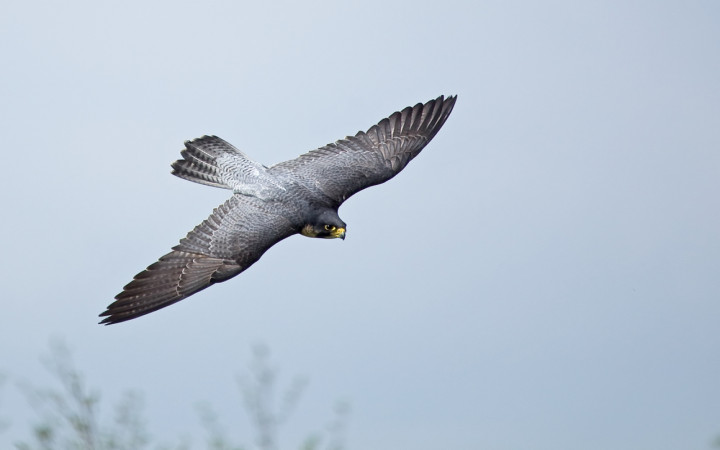Have you ever flown on an airplane? One of the biggest benefits of traveling by air is the ability to fly great distances in a short time because of how fast airplanes can go.
Birds enjoy similar benefits. Have you ever wished you could fly? Wouldn't it be nice to sleep in an extra half-hour in the mornings and then jump out of bed, eat breakfast, brush your teeth, and fly to school?
Have you ever watched birds flying in the sky? Some seem to soar into the air and float there. Others dart about from tree to tree with great speed. Have you ever WONDERed which bird flies the fastest?
That honor goes to the super-speedy peregrine falcon. Peregrine falcons are one of the most common birds of prey around the world. They can be found on every continent except Antarctica.
Peregrine falcons are raptors that hunt other birds and bats. They patrol the skies and dive onto their prey when they spot them from high above. The peregrine falcon's steep, high-speed dive — called a stoop — can send them hurtling toward their prey at over 200 miles per hour!
Can you imagine that? Think about the last time you were traveling on a highway with your family. If you were traveling in the family car at about 50 miles per hour, that's only a quarter of the speed a peregrine falcon reaches during a stoop!
In 2005, a peregrine falcon was recorded traveling 242 miles per hour during a stoop. This makes the peregrine falcon the fastest animal, beating even the speedy cheetah!
Peregrine falcons, whose name means “wanderer," sometimes migrate long distances. For example, peregrine falcons that build nests on Arctic tundra might fly over 15,000 miles each year to spend winters in South America.
Many peregrine falcons, though, are permanent residents of the areas where they live. In addition to cliffs along shorelines, you'll also find peregrine falcons living under bridges and on top of skyscrapers in large cities.
Despite sometimes traveling long distances, peregrine falcons have an amazing ability to return to their favorite spots year after year. Scientists believe some popular nesting sites have been used continuously for hundreds of years by successive generations of peregrine falcons.
Once an endangered species in many areas, peregrine falcons have made a tremendous comeback in recent years. Today, captive breeding programs have led to strong populations around the world and especially in the United States and Canada.
Peregrine falcons have many special features that allow them to fly so quickly. From very light, hollow bones and streamlined feathers to curved wings and strong chest muscles, peregrine falcons were built for speed.
But a peregrine falcon's speed comes in short bursts. Other birds can fly really fast for long periods of time, covering huge distances in a short time. For example, scientists have learned that great snipes can travel from Sweden to Africa in only two days without resting. That means they travel over 4,000 miles at an average speed of about 60 miles per hour!




